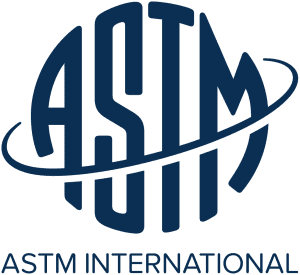ISTA 1C Individual Packaged Products Test Procedure covers testing of individual packaged-products weighing 150 lb or less when prepared for shipment.
Testing Standard:
ISTA 1C Individual Packaged Products Weighing 150 lb (68 kg) or Less Extended Integrity Testing; ie ISTA 1C Packaged Products
Standard Number
ISTA 1C
Standard Title
Extended Testing for Individual Packaged-Products 150 lb (68 kg) or Less
Overview for ISTA 1C Individual Packaged Products Weighing 150 lb (68 kg) or Less Extended Integrity Testing
ISTA 1C Individual Packaged Products is an extended procedure of non-simulation integrity performance testing. This procedure could be used as a starting point for comparing various package design types. Purple Diamond Testing offers ISTA 1C Testing as part of our packaging distribution testing services. This test, like Procedure 1A and 1B, can be used to evaluate the performance of a packaged product. This test is designed to simulate real-world transport conditions and is an essential part of the packaging testing process.
During the ISTA 1C extended integrity testing, the packaged-product is exposed to various hazards such as shocks, vibrations, drops, and compression. The test evaluates the ability of the package to protect the product from damage during transportation. When the test is done properly, there will be more efficient distribution costs, increased customer satisfaction, decreased product recall, and more!
The test involves subjecting the packaged-product to several tests, including:
1. Shock tests: The packaged-product is subjected to a series of shocks of varying intensities to determine its ability to withstand sudden impacts. This test is required for the ISTA Certification.
2. Vibration tests: The packaged-product is exposed to vibrations of different frequencies and amplitudes to determine its ability to withstand vibrations that occur during transportation. This test is required for the ISTA Certification.
3. Drop tests: The packaged-product is dropped from different heights to determine its ability to protect the product from damage due to accidental drops. This test is required for the ISTA Certification.
4. Compression tests: The packaged-product is subjected to compressive forces to determine its ability to withstand the pressure that occurs during transport. This test is required for the ISTA Certification.
The ISTA 1C extended integrity testing is an essential part of the packaging testing process, as it helps ensure that packaged-products can withstand the rigors of transportation. The test can also help identify weaknesses in their packaging designs so that they can improve their products and reduce the risk of damage during transportation. In this, the package and product are considered together to ensure accuracy in the entire process, from start to finish. This procedure could be used as a starting point for comparing various package design types. During the ISTA 1C extended integrity testing, the packaged-product is exposed to various hazards such as shocks, vibrations, drops, and compression. The test evaluates the ability of the package to protect the product from damage during transportation.
ISTA 1C Related Keywords: – ISTA 1C testing, distribution simulation testing, packaging testing, transit testing, vibration testing, drop testing, compression testing, shock testing, package testing, package design validation, transportation testing, ISTA certified laboratories, packaging integrity testing, package performance testing, package validation testing, package durability testing, ISTA 1C
Overview for ISTA 1C Individual Packaged Products Weighing 150 lb (68 kg) or Less Extended Integrity Testing
| Test Category | Test Type | Test Level | For ISTA Certification |
|---|---|---|---|
| Atmospheric Preconditioning | Temperature and Humidity | Ambient | Required |
| Compression Conditioning | Machine or Static | Calculated Test Load or Force | Required |
| Vibration | Fixed Displacement - Random | 1 in (25 mm) peak to peak at a frequency to be determined - overall Grms level of 1.15 | Required |
| Shock | Drop - Incline Impact - Horizontal Impact | Height varies with packaged product weight - Impact velocity varies with packaged-product weight - Impact velocity varies with packaged-product weight | Required |
Rationale for ISTA 1C Individual Packaged Products Weighing 150 lb (68 kg) or Less Extended Integrity Testing
Key Points:
Related Standards:
- ASTM D642 – Test Method for Determining Compressive Resistance of Shipping Containers, Components, and Unit Loads
- ASTM D880 – Test Method for Impact Testing for Shipping Containers and Systems
- ASTM D999 – Test Methods for Vibration Testing of Shipping Containers
- ASTM D4728 – Test Method for Random Vibration Testing of Shipping Containers
- ASTM D5276 – Test Method for Drop Test of Loaded Containers by Free Fall
- ASTM D5487 – Test Method for Simulated Drop of Loaded Containers by Shock Machines
Can be used to compare relative performance of package and product design variations using compressive force, vibration (random or fixed displacement), and shock tests (drop or incline impact). The procedure is used to create harsh worst-case hazards in a laboratory environment while comparing multiple design variation packaging systems.
There are a few different compression tests, which include but are not limited to: the apply and release test and the apply and hold test. The systems use include a compression test system and a weight and load spreader. Other equipment needed to complete the procedure includes a vibration test system, a rotary, metal shim, tachometer and stopwatch. The types of shock tests include but are not limited to, the drop test, the vertical shock test, the alternative incline test, and the alternative horizontal test. These tests are all in relevance to ASTM D5276, ASTM D5487, ASTM D880, and ASTM D4003. Before beginning the actual tests, we will find the faces, edges, and corners according to the proper procedure protocols. Also before we begin, we will come to know the packaged products’ weight as well as all its dimensions, including the length, width, and height in inches or meters. There is also a conditioning requirement before the vibration and impact tests begin. Compression test systems use the apply and release test force as well as the apply and hold test force. The weight and load spreader uses the dead weight test load. Packaging engineers will then decide the test force or load that is to be used in the compression conditioning block. “For the vibration system testing, a restraining device or devices shall be used with the vibration test system in order to prevent the test specimen from moving off the platform and to maintain test orientation of the packaged product, but also the device shall not restrict the vertical motion of the test sample during the test, ” according to the ISTA booklet.
At Purple Diamond, we offer a free consultation or a guided tour of our facilities. Consultations can be done over the phone or on zoom, so choose what suits you best. To get in touch, go to our Contact Us page and fill out the form or book an appointment using the calendar below. Our goal is to assist you in any way possible, so please don’t hesitate to contact us. Thank you so much for reading down this far and thank you for considering Purple Diamond as your dedicated testing, engineering, and design facility for all of your packaging needs.
Related Testing Standards
- ASTM D642
- ASTM D685
- ASTM D880
- ASTM D951
- ASTM D999
- ASTM D3078
- ASTM D3103
- ASTM D3285
- ASTM D4169
- ASTM D4332
- ASTM D4728
- ASTM D5265
- ASTM D5276
- ASTM D5277
- ASTM D5487
- ASTM D6055
- ASTM D6179
- ASTM D6344
- ASTM D6653
- ASTM D7386
- ASTM F88
- ASTM F1140
- ASTM F1886
- ASTM F1929
- ASTM F1980
- ASTM F2096
- ASTM F2250
- ASTM F3039
- ASTM D1596
Contact Us
Accreditations
Affiliations









